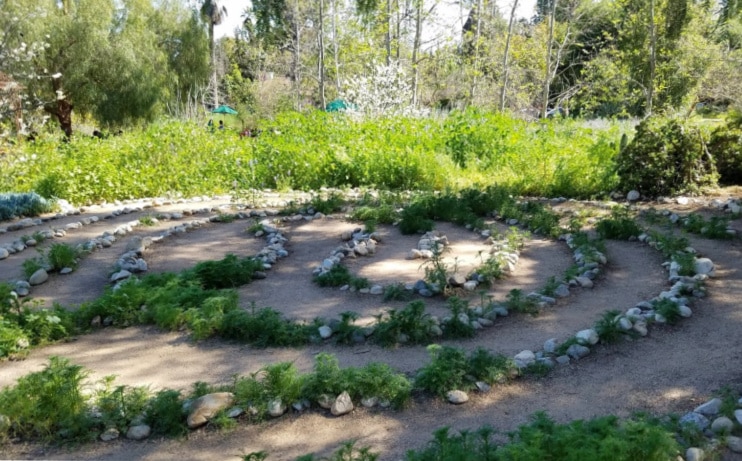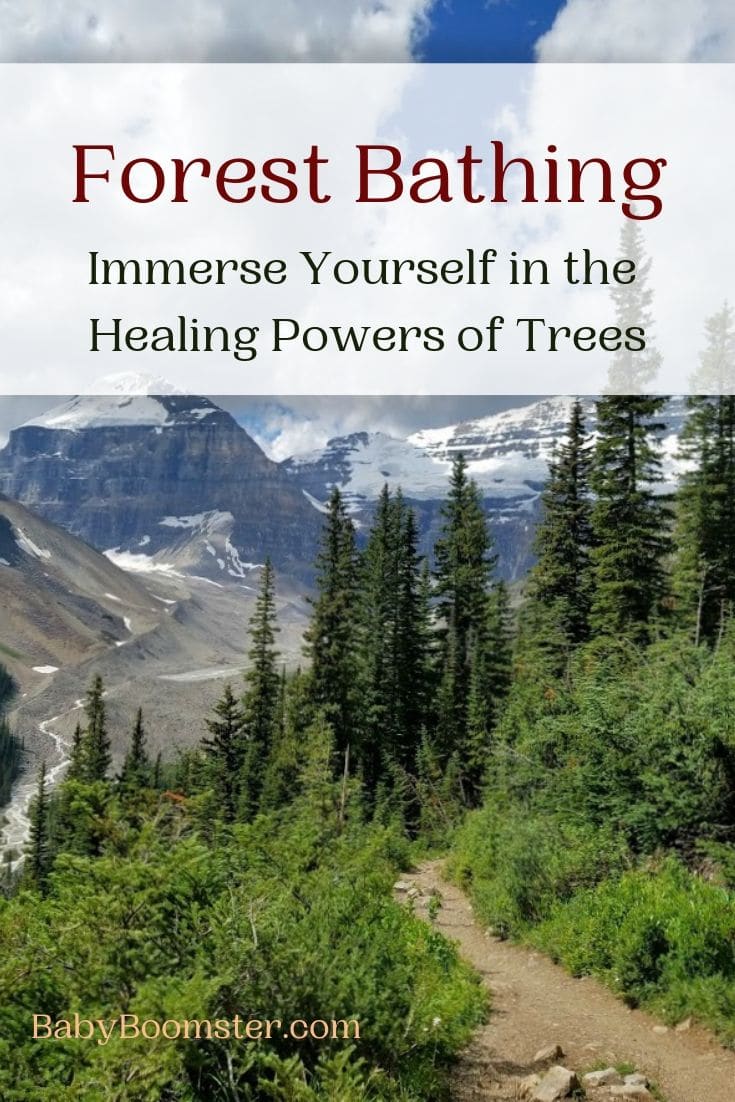As a senior living in the urban environment of Los Angeles, I always look for opportunities to spend time in green spaces. It wasn’t until I was introduced to a book called Forest Bathing, by Dr. Qing Li, that I learned about the enormous healing capacity of trees, plants, and nature.
Dr. Li lives in Tokyo, Japan, and is the Chairman of the Japanese Society for Forest Medicine. Japan has over 62 registered forest therapy bases where you can become one with nature and receive healing treatments from forest medicine practitioners who focus on wellness care. Some of these bases have natural mineral hot springs with additional healing benefits that participants can enjoy after spending hours in the woods.
You don’t have to visit Japan to practice forest bathing, also known as Shinrin-Yoku. You can do it anywhere there’s a green space available. That’s why it’s so important for large cities to continually plant trees, and provide parks, gardens, and even small planted areas near office buildings to relieve the stress and anxiety of city life.
Be one with nature where ever you are
I was able to fully appreciate the incredible healing powers of forest bathing when my daughter and I went to Banff and Lake Louise in the Canadian Rockies. We spent an entire day hiking over 10 miles breathing all the fresh natural scents, listening to the rustling of trees, and taking in the stunningly turquoise glacier-fed lake and inlets below.
I could have stayed there forever but knew that in a month it would be frozen over.
A day hike or weekend spent in the mountains does wonders for your soul no matter how old you are. It can lift your mood, lower your blood pressure, reduce stress, increase your chi life energy, and boost your immune system. If you do it with a loved one or friend, it will further bond you together and you’ll be happier overall.
How to practice Forest Bathing
Find an area that is dense with trees and plants. If you aren’t near a forest, go to a park, garden, beach, or pond. Use your 5 senses. If you can, leave your camera and other devices behind. Walk slowly.
- Listen to the birds singing, the rustling of branches, and any other sounds within earshot.
- Gaze at the branches and leaves of trees as the sunlight glides through them.
- Use your nose and smell your surroundings. You may want to go up to a tree or flower and give it a sniff.
- Taste the air as you breathe in through your lungs.
- Touch the natural world. Hold a branch, rock, leaves, or seashell. Dip your hands into a running stream or pond.
- Allow the natural environment to fill you up with a sense of joy and serenity.
You can also do yoga or tai chi, meditate, walk barefoot, taste edible plants, (only if you are certain they are safe) drink tea, sit in a hot spring, paint, or draw what you see. Your music will be the sounds of nature. Listen to its orchestra.
Spend time in your city’s nature zones
Los Angeles is a sprawling city but there are plenty of green places to visit where you can revel in nature. The Huntington Library and Botanical Gardens are not far from where I live. When I was there, I spent time in its Japanese and Chinese Gardens. In fact, that’s where I bought Dr. Li’s book. I also love to visit LA’s urban lakes, Griffith Park, hiking areas, and beaches.
Green space can be found everywhere
Big cities are becoming cognizant of the health benefits that green space affords its population and are consciously building scenic parks, adding greenery to streets and roads, and lush environments near office buildings. Some are creating protective environments for native animals.
Where can you find cities with the greenest space?
World Atlas lists the top 10 cities of the world with the most urban green space. They include:
- Moscow, Russia (Who knew?)
- Singapore
- Sydney, Australia
- Vienna, Austria
- China
- Hong Kong
- Stockholm, Sweden
- Madrid, Spain – I visited the stunning Retiro Park when we were in Madrid.
- Rome, Italy
- London, England
These are the cities in the United States with the greenest space, according to National Geographic:
- Charleston, S.C.
- Asheville, N.C
- Baton Rouge, LA
- San Luis Obispo, CA
- Olympia, WA
- Myrtle Beach, S.C.
- Dayton, OH
- Madison, WI
- Harrisburg, Penn
- Ventura, CA
Notable green spaces in urban jungles that are spectacular include:
Gardens by the Bay in Singapore, Promenade Plantee in Paris, Lurie Garden in Chicago, Boston Common in Boston, The High Line in New York, Parks Garden at Namba Parks in Osaka, Japan, Stanley Park, in Vancouver, and Garden Bridge in London.
Walking in nature can help improve chronic conditions
The practice of forest bathing in any form is one of the easiest and cheapest ways to improve your health as you age, especially if your immune system is compromised. If you’re ill, Dr. Li suggests that you spend 2 nights and 3 days in a forest environment. Turn off all your devices so that you can thoroughly engage yourself with the sights, sounds, and aromas of the natural world.
Trees give off a compound that supports our “NK” (natural killer) cells. These cells strengthen our immune system to prevent diseases like cancer. Cancer patients who are in chemotherapy may do better if they spend time among trees or even have a view of trees through a window or pictures of the forest on a wall.
How to provide a forest-like environment in your home
Not everyone can get away to the forest, but you can create the same vibe and energy in your home. One way to do this is to put drops of forest-scented essential oil into a diffuser. The woodsy fragrance it emits will help you relax, heal, and sleep better.
Dr. Li recommends Hinoki oil, which comes from the Japanese cypress tree. It’s often used in Shinto Shrines and has a wood-like aroma. You can also put drops of it in your shower or bath to relieve aching muscles or to fend off colds and flu. Essential oils made from pine, spruce, cedar, and Douglas Fir will also create the psychological sensation of forest bathing. Other Japanese essential oils used for this purpose include hiba, hokkaido momi, and sugi.
Fill your home with plants. Plants help us breathe better because they absorb carbon dioxide and release oxygen. Our indoor air is often more polluted than outdoor air. Plants will soak up toxic fumes like cleaning products, cigarette smoke, and fabric fumes.
The U.S. Lung institute recommends putting Chinese evergreens and areca palm in your living room, gerbera daisies or snake plants in the bedroom, and a money plant anywhere. Any and all indoor plants will keep you healthier indoors.
More green space in our world benefits everyone
Children these days are not spending enough time outdoors like we did when we were kids and have become tied to devices that are detrimental to their health. Dr. Li notes that kids with ADHD who spend time learning in green spaces, begin to lose their symptoms. I was proud to help my children’s elementary school get a grant for an outdoor habitat classroom. More city schools need to do this or at least provide trees and planted areas where children can read and relax.
Forest bathing is a safe and drug-free way to relieve anxiety and depression. It is beneficial no matter if you are a child or a senior. Whenever you feel in a foul mood, drop what you’re doing and go for a walk in nature. It can even be around the block as long as there are trees and plants.
We all need to be concerned about protecting our planet’s trees
To say I’m alarmed at what’s happening regarding climate change and deforestation would be an understatement. We must work diligently to protect our environment for our children’s and grandchildren’s future.
Carbon sequestration is the process by which atmospheric carbon dioxide is taken up by trees, grasses, and other plants through photosynthesis and stored as carbon in biomass (trunks, branches, foliage, and roots) and soils. The sink of carbon sequestration in forests and wood products helps to offset sources of carbon dioxide in the atmosphere, such as deforestation, forest fires, and fossil fuel emissions.
Why not try it yourself?
Can you imagine being healed of a chronic illness simply by spending more time forest bathing? I suggest all seniors and those who are ill make time to spend among trees, lakes, and beaches. Nature is our best medicine and it’s free.
What are your favorite forests or green spaces? Please leave a comment below.








You had me at “Forest Bathing!” Everything you’ve written makes total sense. I’m always more centered and grounded when I’m in nature and away from people. For a couple of years I was going to NYC almost every month and by day three, I was more than ready to come home. I feel sorry for the people crammed into concrete canyons filled with yellow taxis and noise. They’ve lost touch with the center of the universe. xoxox, B
I agree, Brenda. There’s nothing like being out in nature even if it’s a city garden. It’s so refreshing and centering.
I live a short distance from Banff and youngest my son and his family live in Lake Lousie where he is a manager of one of the hotels. We take advantage of the forest every chance we get! It truly is healing and restoring.
P.S. I’m thrilled that you enjoyed your visit to Banff/Lake Louise! I think it is one of the most amazing spots on earth!
You’re so right about Banff and Lake Louise, Diane and you’re so lucky to live nearby. I hope I can go up there again because there’s so much to see and it’s so relaxing.
Wow. I can’t think of anything lovelier. Nature has good energy and to be surrounded by it, must help on every level, including spiritual. Love your list of countries and cities with most green. Thank you!
That’s so true, Laurie, You can really feel the vibes if you take time to really let the forest immerse you. It’s so peaceful.